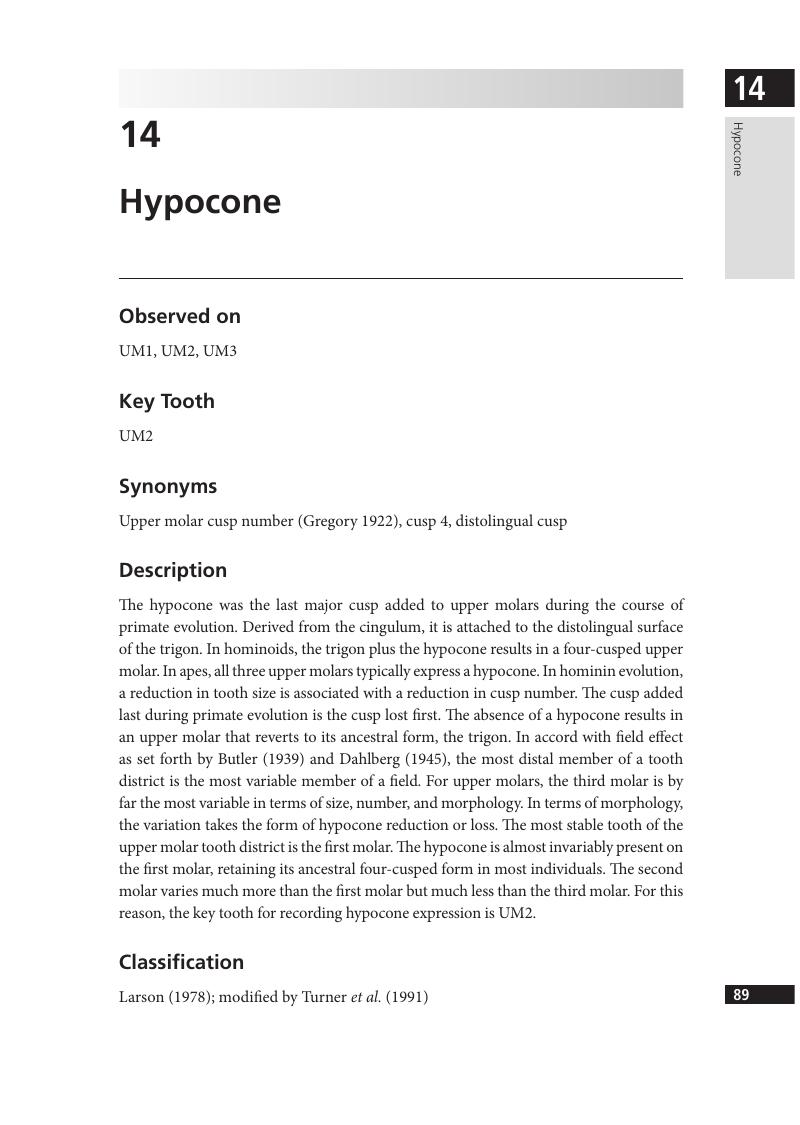Book contents
- Human Tooth Crown and Root MorphologyThe Arizona State University Dental Anthropology System
- Human Tooth Crown and Root Morphology
- Copyright page
- Dedication
- Contents
- Acknowledgments
- Part I Introduction
- Part II Crown and Root Trait Descriptions
- 1 Winging
- 2 Labial Convexity
- 3 Palatine Torus
- 4 Shoveling
- 5 Double-Shoveling
- 6 Interruption Grooves
- 7 Tuberculum Dentale
- 8 Bushman Canine
- 9 Canine Distal Accessory Ridge
- 10 Premolar Accessory Ridges
- 11 Upper Premolar Mesial and Distal Accessory Cusps
- 12 Uto-Aztecan Premolar
- 13 Metacone
- 14 Hypocone
- 15 Bifurcated Hypocone
- 16 Cusp 5
- 17 Marginal Ridge Tubercles (Protoconule, Mesial Accessory Tubercle, Mesial Paracone Tubercle)
- 18 Carabelli's Cusp
- 19 Parastyle
- 20 Enamel Extensions
- 21 Upper Premolar Root Number
- 22 Upper Molar Root Number
- 23 Upper Lateral Incisor Variants
- 24 Pegged/Reduced/Missing Third Molars
- 25 Premolar Odontomes
- 26 Midline Diastema
- 27 Lower Premolar Cusp Number
- 28 Anterior Fovea
- 29 Mandibular Torus
- 30 Lower Molar Groove Pattern
- 31 Rocker Jaw
- 32 Lower Molar Cusp Number
- 33 Deflecting Wrinkle
- 34 Distal Trigonid and Mid-Trigonid Crests
- 35 Protostylid
- 36 Cusp 6
- 37 Cusp 7
- 38 Lower First Premolar Root Number
- 39 Lower Canine Root Number
- 40 Three-Rooted Lower Molar
- 41 Lower Molar Root Number
- 42 Torsomolar Angle
- Part III Conclusions
- Appendix: Comparative Data
- Miscellaneous endmatter
- References
14 - Hypocone
from Part II - Crown and Root Trait Descriptions
Published online by Cambridge University Press: 21 April 2017
- Human Tooth Crown and Root MorphologyThe Arizona State University Dental Anthropology System
- Human Tooth Crown and Root Morphology
- Copyright page
- Dedication
- Contents
- Acknowledgments
- Part I Introduction
- Part II Crown and Root Trait Descriptions
- 1 Winging
- 2 Labial Convexity
- 3 Palatine Torus
- 4 Shoveling
- 5 Double-Shoveling
- 6 Interruption Grooves
- 7 Tuberculum Dentale
- 8 Bushman Canine
- 9 Canine Distal Accessory Ridge
- 10 Premolar Accessory Ridges
- 11 Upper Premolar Mesial and Distal Accessory Cusps
- 12 Uto-Aztecan Premolar
- 13 Metacone
- 14 Hypocone
- 15 Bifurcated Hypocone
- 16 Cusp 5
- 17 Marginal Ridge Tubercles (Protoconule, Mesial Accessory Tubercle, Mesial Paracone Tubercle)
- 18 Carabelli's Cusp
- 19 Parastyle
- 20 Enamel Extensions
- 21 Upper Premolar Root Number
- 22 Upper Molar Root Number
- 23 Upper Lateral Incisor Variants
- 24 Pegged/Reduced/Missing Third Molars
- 25 Premolar Odontomes
- 26 Midline Diastema
- 27 Lower Premolar Cusp Number
- 28 Anterior Fovea
- 29 Mandibular Torus
- 30 Lower Molar Groove Pattern
- 31 Rocker Jaw
- 32 Lower Molar Cusp Number
- 33 Deflecting Wrinkle
- 34 Distal Trigonid and Mid-Trigonid Crests
- 35 Protostylid
- 36 Cusp 6
- 37 Cusp 7
- 38 Lower First Premolar Root Number
- 39 Lower Canine Root Number
- 40 Three-Rooted Lower Molar
- 41 Lower Molar Root Number
- 42 Torsomolar Angle
- Part III Conclusions
- Appendix: Comparative Data
- Miscellaneous endmatter
- References
Summary

- Type
- Chapter
- Information
- Human Tooth Crown and Root MorphologyThe Arizona State University Dental Anthropology System, pp. 89 - 94Publisher: Cambridge University PressPrint publication year: 2017
References
Select Bibliography
- 1
- Cited by



